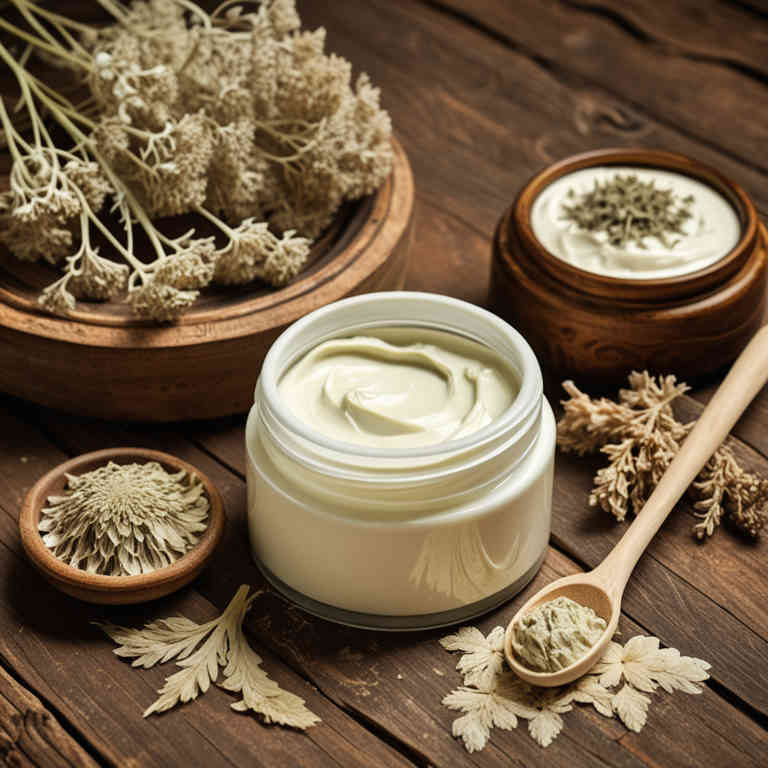Angelica sinensis cream for medicinal use

Angelica sinensis cream is a topical herbal preparation made from the root of the Angelica sinensis plant, also known as dong quai.
It is traditionally used in Chinese herbalism to support women's health, particularly for menstrual irregularities and menopausal symptoms. The cream may help alleviate pain and inflammation due to its anti-inflammatory and circulatory properties. It is often applied to the skin to promote circulation and relieve muscle aches.
This preparation is valued for its soothing and nourishing effects on the skin and internal organs.
Uses
Angelica sinensis cream has been used to promote women's health and alleviate symptoms associated with menopause, such as hot flashes and menstrual irregularities.
Historically, it has been a key component in traditional Chinese medicine, valued for its purported ability to nourish the blood and regulate the menstrual cycle. In modern times, it is often incorporated into skincare products due to its purported anti-inflammatory and regenerative properties. The cream is believed to support skin health by enhancing circulation and reducing the appearance of wrinkles.
Its use continues to evolve, blending traditional wisdom with contemporary wellness trends.
Benefits
Angelica sinensis cream has health benefits such as improving circulation, reducing inflammation, and supporting hormonal balance.
It is traditionally used in Chinese medicine to enhance blood flow and alleviate menstrual discomfort. The cream may also promote skin health by nourishing and moisturizing the skin. Its anti-inflammatory properties can help reduce symptoms of arthritis and other inflammatory conditions.
Additionally, it is believed to boost energy levels and support overall vitality.
Constituents
Angelica sinensis cream active constituents include ferulic acid, ligustilide, and adenosine, which are known for their therapeutic properties.
Ferulic acid acts as a powerful antioxidant, helping to protect cells from oxidative stress and inflammation. Ligustilide is responsible for its anti-inflammatory and circulatory benefits, promoting blood flow and reducing pain. Adenosine contributes to the cream's ability to enhance cellular energy production and support tissue repair.
Together, these compounds make Angelica sinensis cream beneficial for improving circulation, reducing menstrual discomfort, and promoting overall skin health.
Preparation
To make Angelica sinensis cream, begin by preparing a base of 100 grams of Angelica sinensis root, which is finely chopped or grated.
Next, simmer the root in 500 ml of water for about 30 minutes to extract its medicinal properties. After straining the liquid, mix it with 200 ml of coconut oil or another neutral oil to create a smooth, nourishing cream. Then, add a few drops of essential oils like lavender or chamomile for fragrance and additional calming benefits.
Finally, store the cream in a cool, dark place or refrigerate for longer shelf life.
Side Effects
Angelica sinensis cream may lead to gastrointestinal discomfort, including nausea, vomiting, and diarrhea, due to its potent medicinal properties.
It can also cause allergic reactions in individuals sensitive to angelica or other components in the cream. Prolonged use may result in hormonal imbalances, as angelica sinensis has estrogenic effects. Some users may experience headaches or skin irritation from topical application.
It is important to consult a healthcare professional before using this preparation, especially for those with pre-existing medical conditions or on other medications.